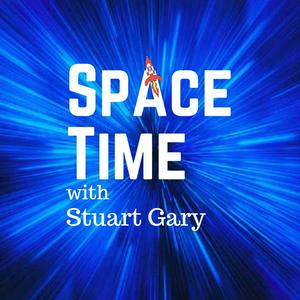Cosmic Speedsters: Unravelling Our Solar System's Surprising Velocity and Enceladus' Organic Secrets
(00:00:00) Cosmic Speedsters: Unravelling Our Solar System's Surprising Velocity and Enceladus' Organic Secrets
(00:00:46) Our solar system is moving faster than expected
(00:04:38) Organic molecules discovered erupting from Saturn’s moon Enceladus
(00:08:29) A new satellite launched to study Earth’s oceans
(00:13:49) The Science Report
(00:15:52) Alex on Tech
In this episode of SpaceTime, we uncover groundbreaking insights into Earth's mysteries and the cosmos beyond.Mysterious Structures in Earth's MantleA new study reveals that enigmatic structures within Earth's mantle may hold vital clues about why our planet evolved the conditions necessary for life. These massive formations, known as large low shear velocity provinces and ultra low velocity zones, reside at the boundary between the mantle and outer core, approximately 2,900 kilometres beneath the surface. The research suggests these anomalies could be remnants of Earth's formative processes, providing a deeper understanding of how elements from the core influenced the planet's cooling, volcanic activity, and atmospheric evolution, ultimately setting Earth apart from Venus and Mars.Unprecedented View of the Milky WayAstronomers have achieved a remarkable new perspective of our home galaxy, the Milky Way, with the largest low-frequency radio image ever assembled. This extensive survey, conducted using the Murchison Wide Field Array radio telescope in Western Australia, captures the intricate birth, evolution, and demise of stars across the southern hemisphere. The new image, which boasts double the resolution and tenfold sensitivity compared to previous observations, offers valuable insights into stellar interactions and the cosmic landscape, revealing patterns in star formation and supernova remnants.Successful Return of Stranded TaikonautsIn a significant development, the three Chinese taikonauts stranded in orbit after their Shenzhou 20 spacecraft was struck by space debris have safely returned to Earth aboard the Shenzhou 21 capsule. The crew's return marks the end of a six-month mission at the Tiangong space station, with their extended stay setting a new record for the longest duration in space for Chinese astronauts. The episode highlights the challenges of space travel and the rapid response by Beijing to ensure crew safety.www.spacetimewithstuartgary.com✍️ Episode ReferencesNature GeosciencePublications of the Astronomical Society of AustraliaNew England Journal of MedicineBecome a supporter of this podcast: https://www.spreaker.com/podcast/spacetime-your-guide-to-space-astronomy--2458531/support.


